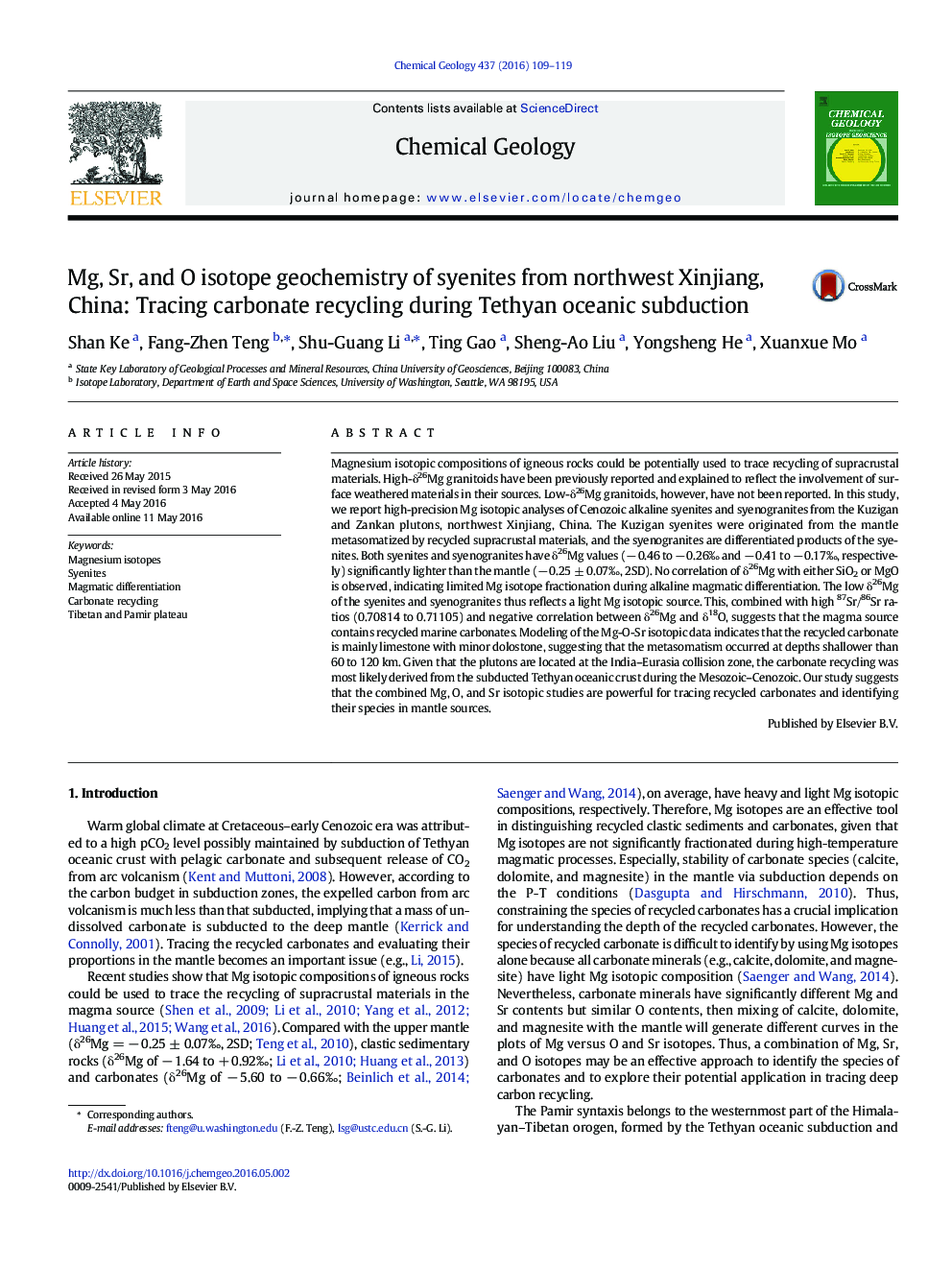| کد مقاله | کد نشریه | سال انتشار | مقاله انگلیسی | نسخه تمام متن |
|---|---|---|---|---|
| 6436088 | 1637537 | 2016 | 11 صفحه PDF | دانلود رایگان |

Magnesium isotopic compositions of igneous rocks could be potentially used to trace recycling of supracrustal materials. High-δ26Mg granitoids have been previously reported and explained to reflect the involvement of surface weathered materials in their sources. Low-δ26Mg granitoids, however, have not been reported. In this study, we report high-precision Mg isotopic analyses of Cenozoic alkaline syenites and syenogranites from the Kuzigan and Zankan plutons, northwest Xinjiang, China. The Kuzigan syenites were originated from the mantle metasomatized by recycled supracrustal materials, and the syenogranites are differentiated products of the syenites. Both syenites and syenogranites have δ26Mg values (â 0.46 to â 0.26â° and â 0.41 to â 0.17â°, respectively) significantly lighter than the mantle (â 0.25 ± 0.07â°, 2SD). No correlation of δ26Mg with either SiO2 or MgO is observed, indicating limited Mg isotope fractionation during alkaline magmatic differentiation. The low δ26Mg of the syenites and syenogranites thus reflects a light Mg isotopic source. This, combined with high 87Sr/86Sr ratios (0.70814 to 0.71105) and negative correlation between δ26Mg and δ18O, suggests that the magma source contains recycled marine carbonates. Modeling of the Mg-O-Sr isotopic data indicates that the recycled carbonate is mainly limestone with minor dolostone, suggesting that the metasomatism occurred at depths shallower than 60 to 120 km. Given that the plutons are located at the India-Eurasia collision zone, the carbonate recycling was most likely derived from the subducted Tethyan oceanic crust during the Mesozoic-Cenozoic. Our study suggests that the combined Mg, O, and Sr isotopic studies are powerful for tracing recycled carbonates and identifying their species in mantle sources.
Journal: Chemical Geology - Volume 437, 25 October 2016, Pages 109-119